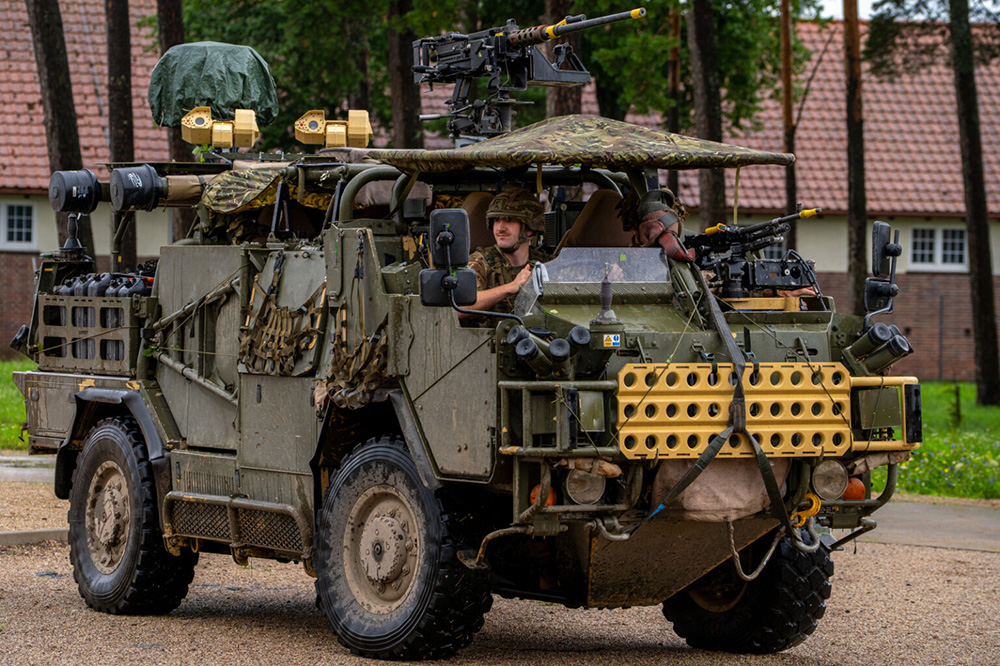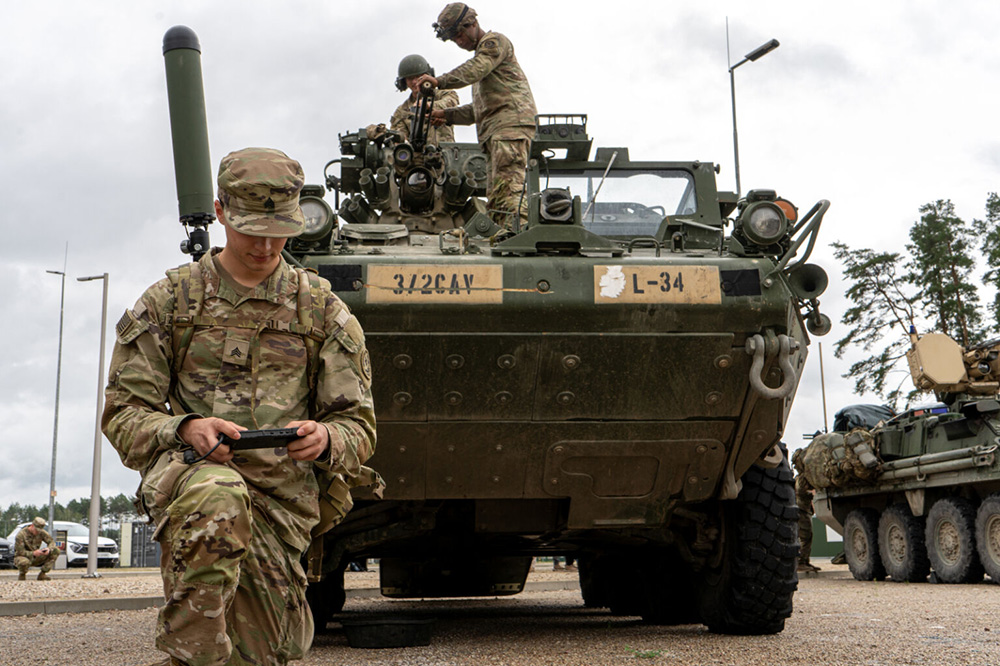In a significant joint effort, U.S. and British armies have been assessing counter-unmanned aerial systems (C-UAS) this week during the latest iteration of the Project Flytrap exercise. Soldiers from the 2nd Cavalry Regiment under V Corps and the 1st Royal Yorkshire Regiment of the British Army convened at the Hohenfels Training Area in Germany and the Bemowo Piskie Training Area in Poland. This initiative aims to enhance the preparedness of partner nations in addressing the emerging threats posed by drones on the battlefield.
“Project Flytrap is a series of training events designed to test and refine new counter-UAS technologies and tactics,” explained Col. Matthew B. Davis, V Corps transformation chief and exercise director. “Recent conflicts have underscored a critical capability gap, and we are leveraging Project Flytrap to address these through comprehensive training aimed at strengthening our collective deterrence against potential adversaries.”
The exercise involved collaboration not just between military personnel but also included industry representatives specializing in counter-UAS technology. Participants worked together to rapidly refine technologies for better battlefield application.
“We are merging military forces with industry experts to bring innovations out of the labs and into the hands of combat soldiers,” said Col. Donald R. Neal, commander of the 2nd Cavalry Regiment. “Soldiers are providing real-time feedback on equipment, allowing for immediate improvements and testing.”
This collaboration aligns with the directives of Defense Secretary Pete Hegseth, who emphasized the importance of integrating drone technology into military training in his recent memorandum titled “Unleashing U.S. Military Drone Dominance.” Neal highlighted that Project Flytrap incorporates small UAS and counter-UAS in traditional battle drills, enabling troops to gain experience before meeting these threats in real combat situations.

Army Stryker M1127 reconnaissance vehicles, assigned to Lightning Platoon, 3rd Squadron, 2nd Cavalry Regiment, are staged to demonstrate counter-unmanned aerial system capabilities during the static display portion of Project Flytrap 4.0 at Bemowo Piskie Training Area, Poland, July 29, 2025. © Army Sgt. Alejandro Carrasquel
Neal further elaborated on the mission of the 2nd Cavalry Regiment, stating that soldiers are not only evaluating equipment but also learning how to effectively utilize counter-UAS technologies within their established combat strategies.
As part of this exercise, eight different counter-UAS systems from four industry providers were tested. “We are focusing on merging cutting-edge technologies like radar and optical sensors into practical applications on the ground, allowing our soldiers to adapt to the growing aerial threats they face,” noted Command Sgt. Maj. Eric S. Bol of the 3rd Squadron, 2nd Cavalry Regiment.
A key takeaway from the exercise is the necessity of managing information effectively, particularly at higher command levels. “We’ve identified a potential need for an understanding of data management and software manipulation, which may not be present in every segment of our force,” Neal said.
Despite the advancements in technology, Army officials maintain that the fundamentals of combat remain essential. “The basics of maneuver warfare—like dispersion and protection—will continue to be critical,” remarked Lt. Col. Jeremy S. Medaris, commander of the 3rd Squadron, 2nd Cavalry Regiment.
The successful collaboration in Project Flytrap showcases a proactive approach in countering contemporary battlefield challenges and reflects the commitment of U.S. and British forces to maintain an operational edge in the evolving landscape of warfare.






